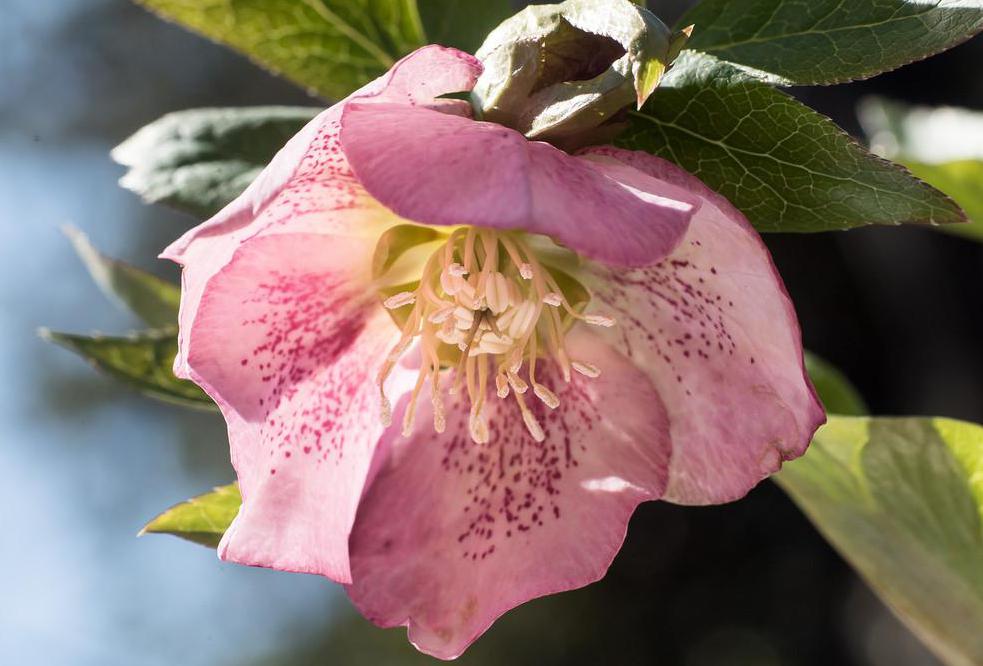At AllThingsNature, we're committed to delivering accurate, trustworthy information. Our expert-authored content is rigorously fact-checked and sourced from credible authorities. Discover how we uphold the highest standards in providing you with reliable knowledge.
What are Christmas Roses?
Christmas Roses are evergreen flowering plants which are distinctive because they bloom in the winter, the period during which the rest of the garden remains dormant. These flowering plants are relatively easy to grow, and they provide a note of bright color and hope in the winter, along with rich evergreen foliage year-round. You may also hear Christmas Roses called Lenten Roses, Snow Roses, or Winter Roses, depending on regional terminology.
Despite the name, Christmas Roses are not actually in the rose family. They are more formally known as Helleborus niger, and they belong to a large genus of plants which closely resemble each other. The hellebores are native to Europe, where they have been cultivated for centuries and used in a variety of ways. Many species including the Christmas Rose also happen to be toxic to both people and animals, which is something you should be aware of when planting them.

The common name for this plant probably comes from the fact that the Christmas Rose superficially resembles some rose cultivars, with five snow white petals and lush green foliage. These plants will thrive in USDA zones four through eight, and they prefer a section of the garden which gets as much light as possible during the winter. The blooming period runs from late fall to early spring, making the Christmas Rose a welcome addition to the garden for people who find themselves depressed by dreary winters.
There are a number of stories about this plant and its origins. Some people say, for example, that Christmas Roses were a gift from God at the time of the birth of Christ, to celebrate His arrival. Since the Christmas Rose sometimes waits until Easter to bloom in some regions, other people associate it with the Resurrection.
Several commercial cultivars of Christmas Roses are available, including cultivars which have been bred to display faint tinges of color like yellow, green, and pink. Because these colors can be variable, if you want a colored variety, you may want to purchase it from a nursery while it is blooming to ensure that the color meets your expectations. These plants like alkaline to semi-alkaline soil, and they prefer partial shade in the spring and summer months. Hellebores also thrive on pruning, so don't be afraid to cut the foliage back if it becomes unsightly.
Frequently Asked Questions
What exactly are Christmas Roses?
Christmas Roses, known scientifically as Helleborus niger, are perennial plants that belong to the buttercup family. Despite their common name, they are not true roses but are so-called because they often bloom around the Christmas season in milder climates. Their flowers are typically white with a hint of pink and are highly valued for their winter blooming.
Are Christmas Roses actually toxic?
Yes, Christmas Roses are toxic. All parts of the plant contain compounds that can be harmful if ingested by humans or animals. Symptoms of poisoning include abdominal pain, diarrhea, and vomiting. It's important to handle these plants with care and keep them away from pets and children.
How do you care for Christmas Roses?
Christmas Roses prefer a sheltered location with partial shade and well-drained soil that is rich in organic matter. They require minimal maintenance once established. It's important to avoid waterlogged conditions, especially in winter, to prevent root rot. Mulching annually with compost or well-rotted manure can help retain moisture and provide necessary nutrients.
When do Christmas Roses typically bloom?
Typically, Christmas Roses bloom from late fall to early spring, with their peak blooming period being around Christmas in milder regions, hence their name. However, flowering times can vary depending on the climate and environmental conditions. In colder areas, they may bloom later, closer to early spring.
Can Christmas Roses be grown indoors?
While Christmas Roses are primarily outdoor plants, they can be brought indoors for short periods to enjoy their blooms. It's best to keep them in a cool room with indirect light and return them outdoors once the flowering period is over. Prolonged indoor conditions can be detrimental to their health.
Are Christmas Roses susceptible to any diseases or pests?
Christmas Roses are relatively disease-resistant but can occasionally suffer from issues like leaf spot, crown rot, and botrytis blight. They can also be affected by pests such as aphids, slugs, and snails. Regular monitoring and maintaining good air circulation around the plants can help prevent most of these problems.
AS FEATURED ON:
AS FEATURED ON:











Discuss this Article
Post your comments